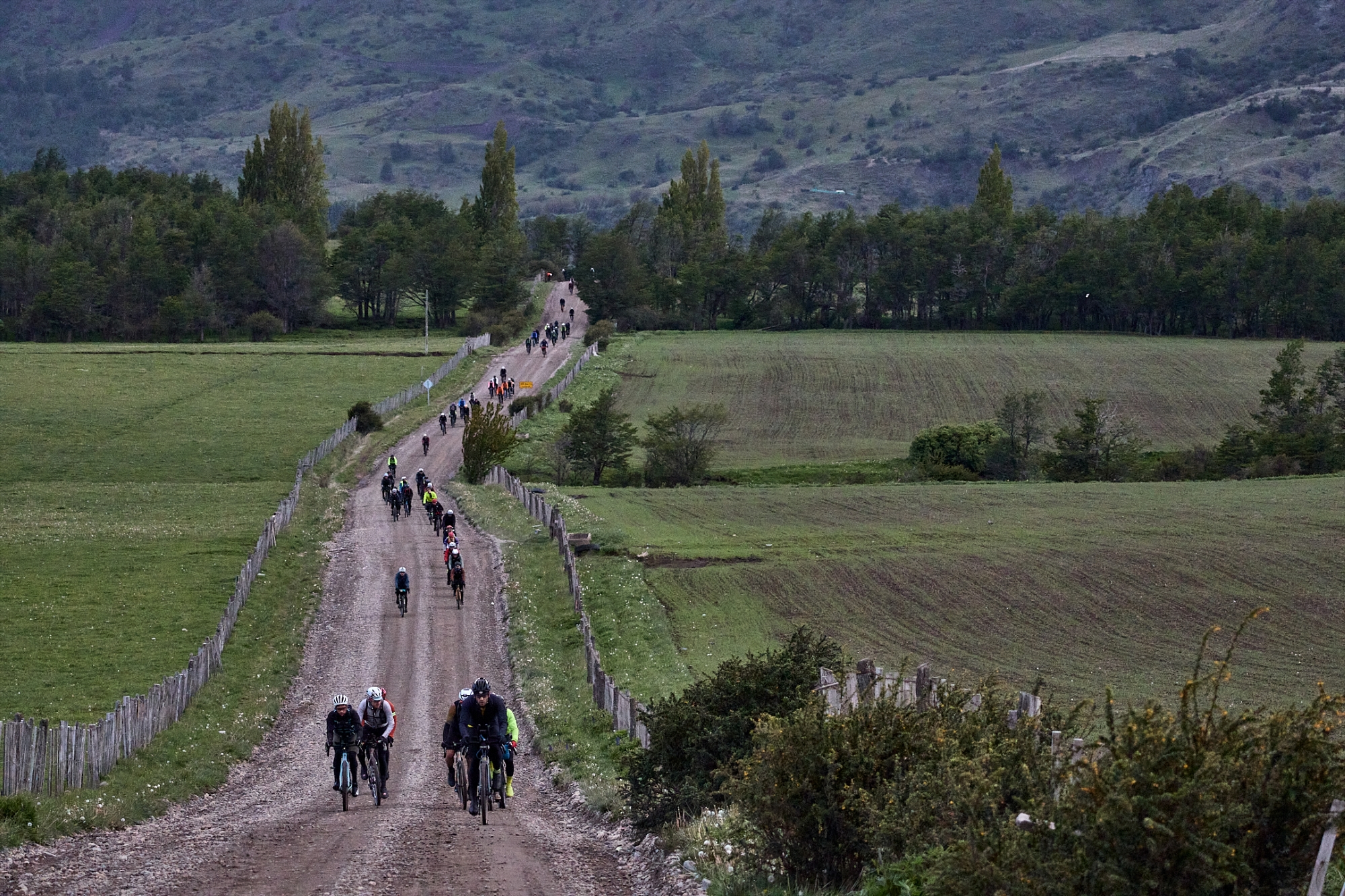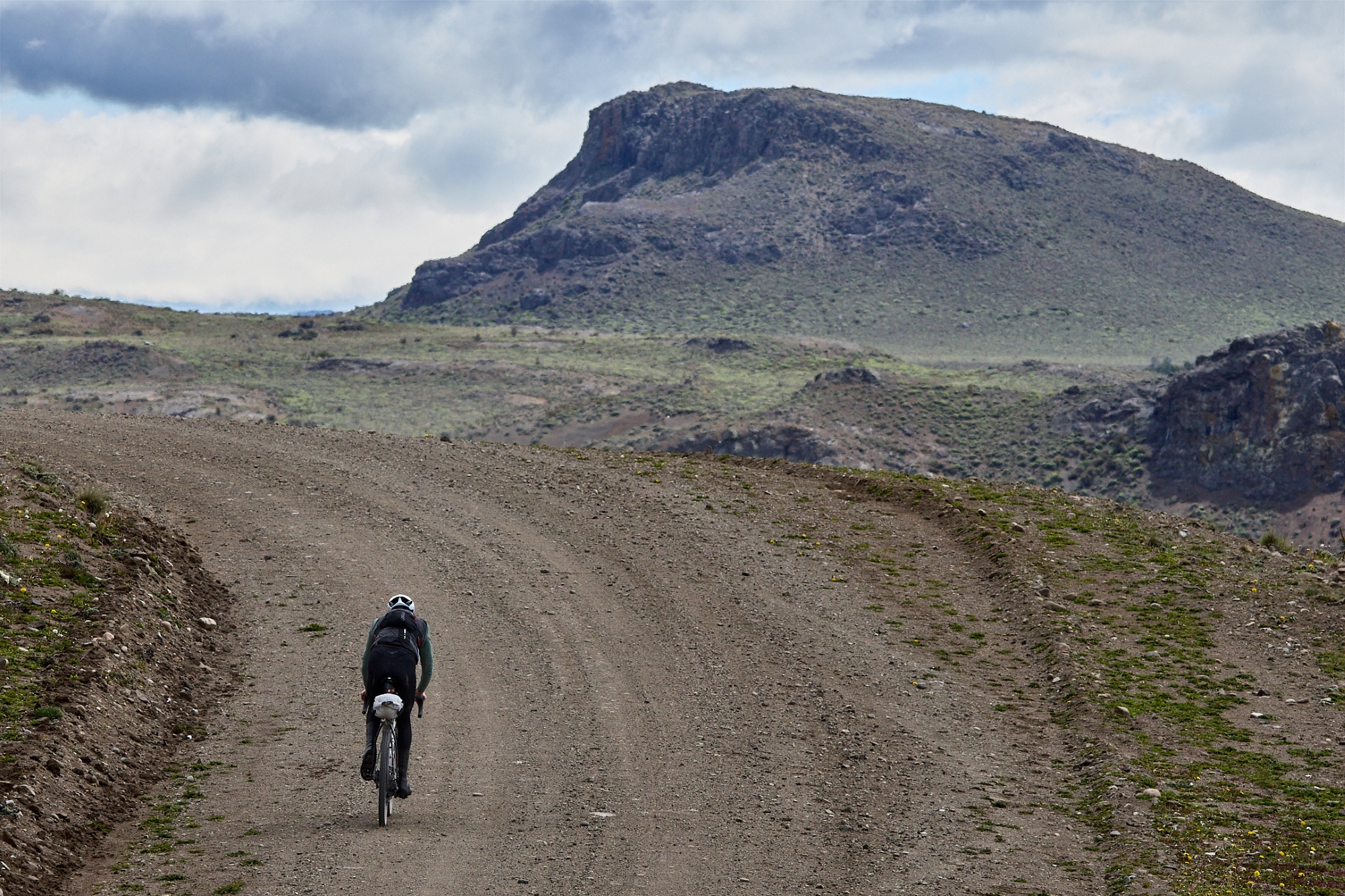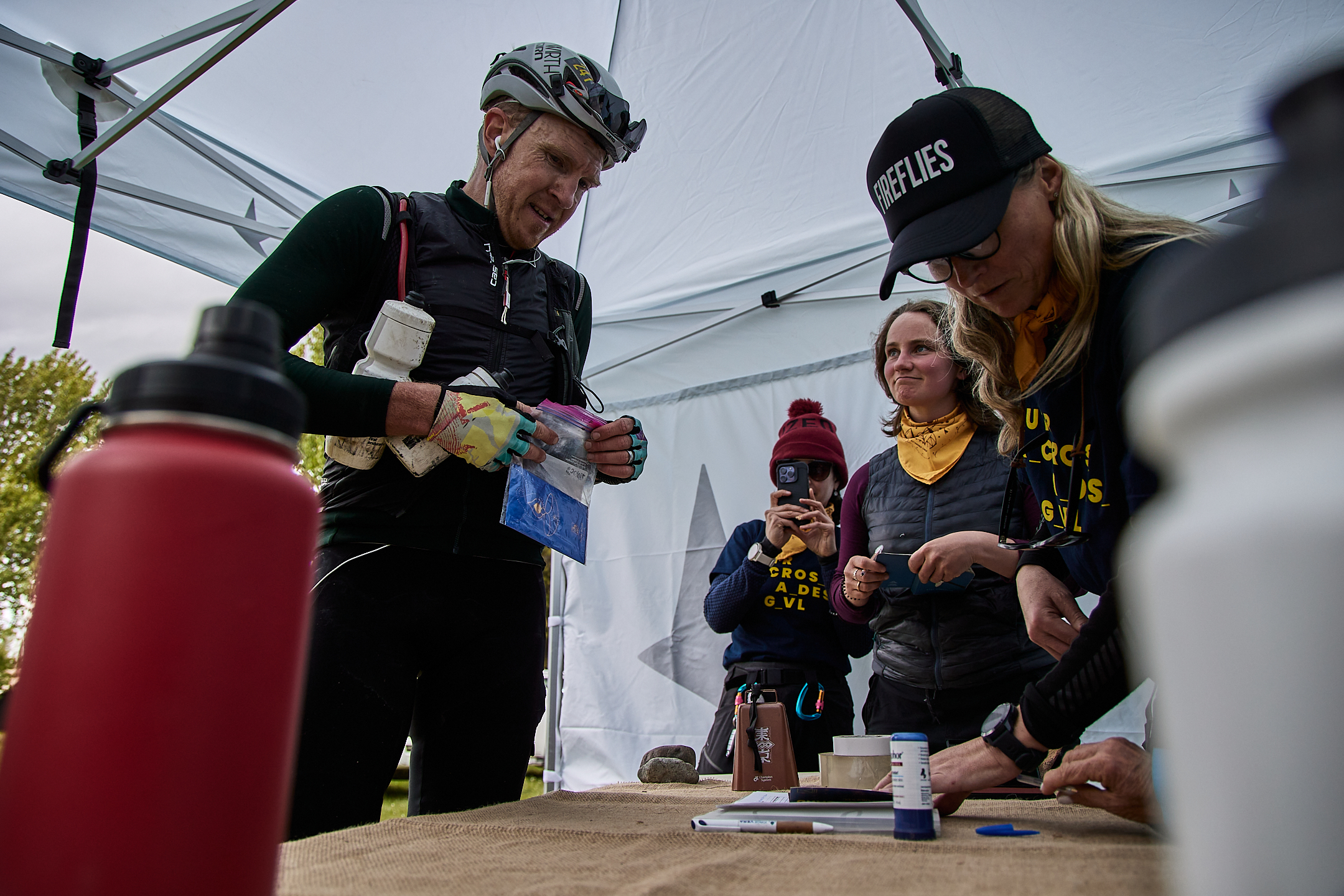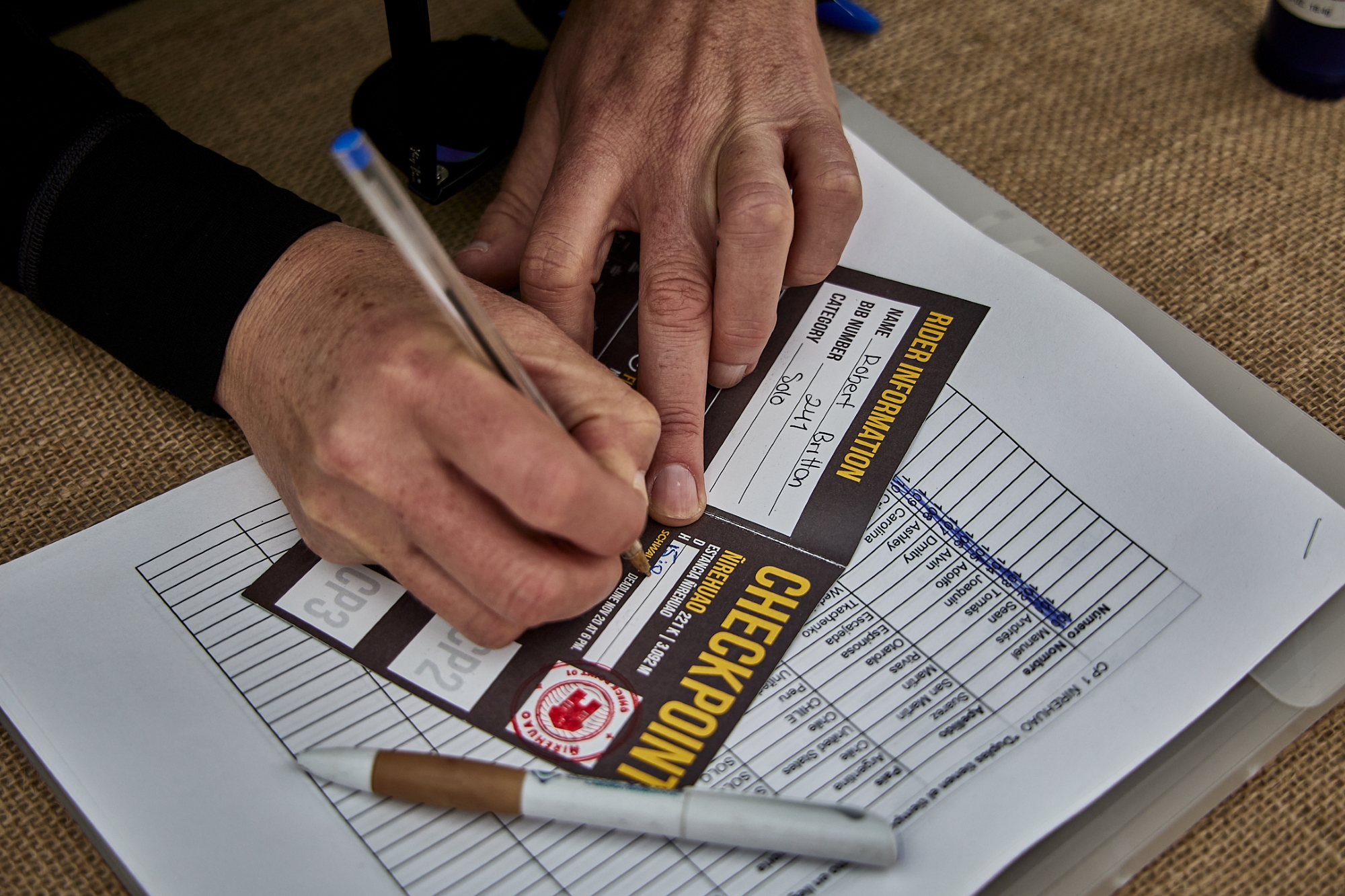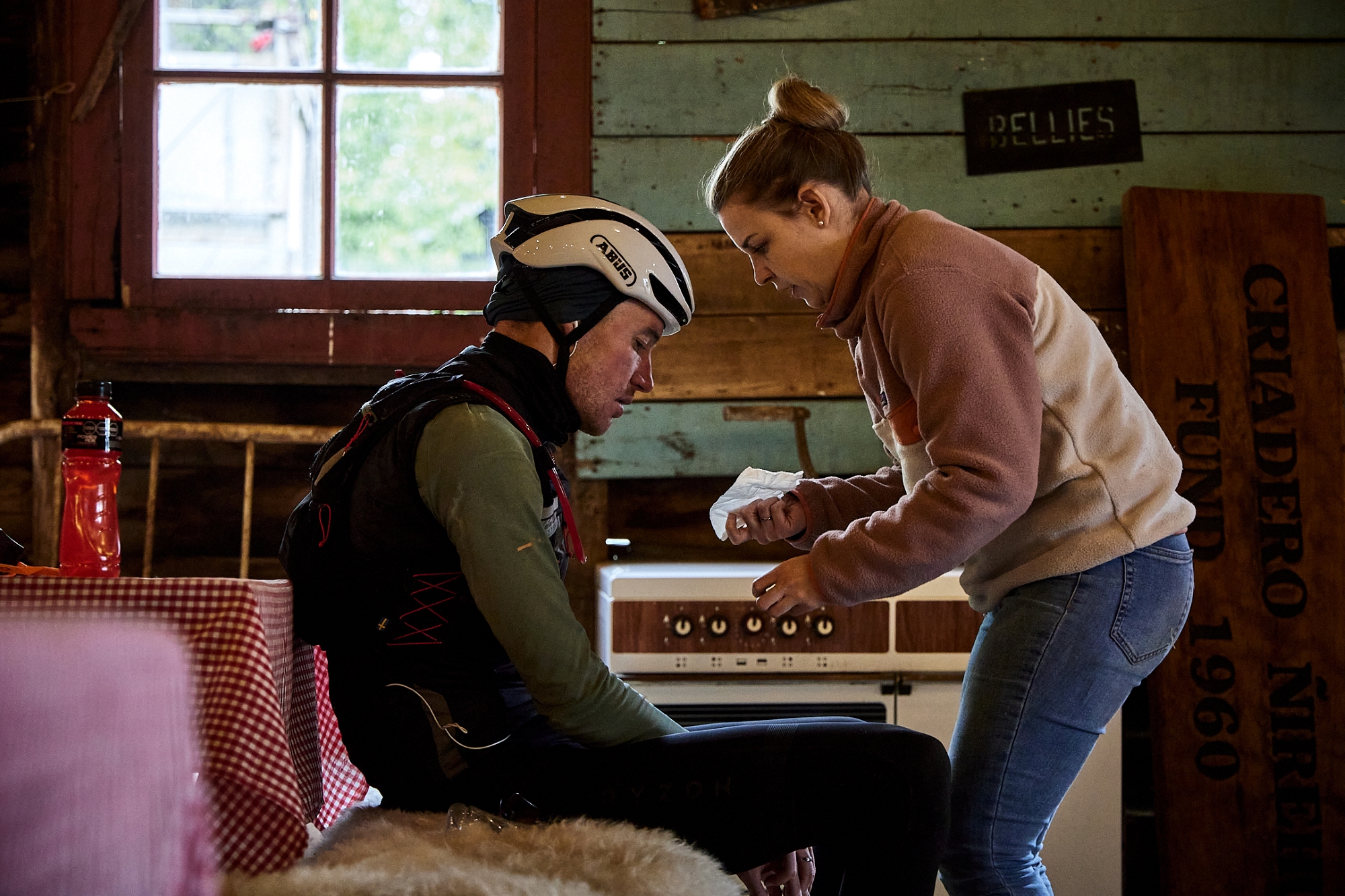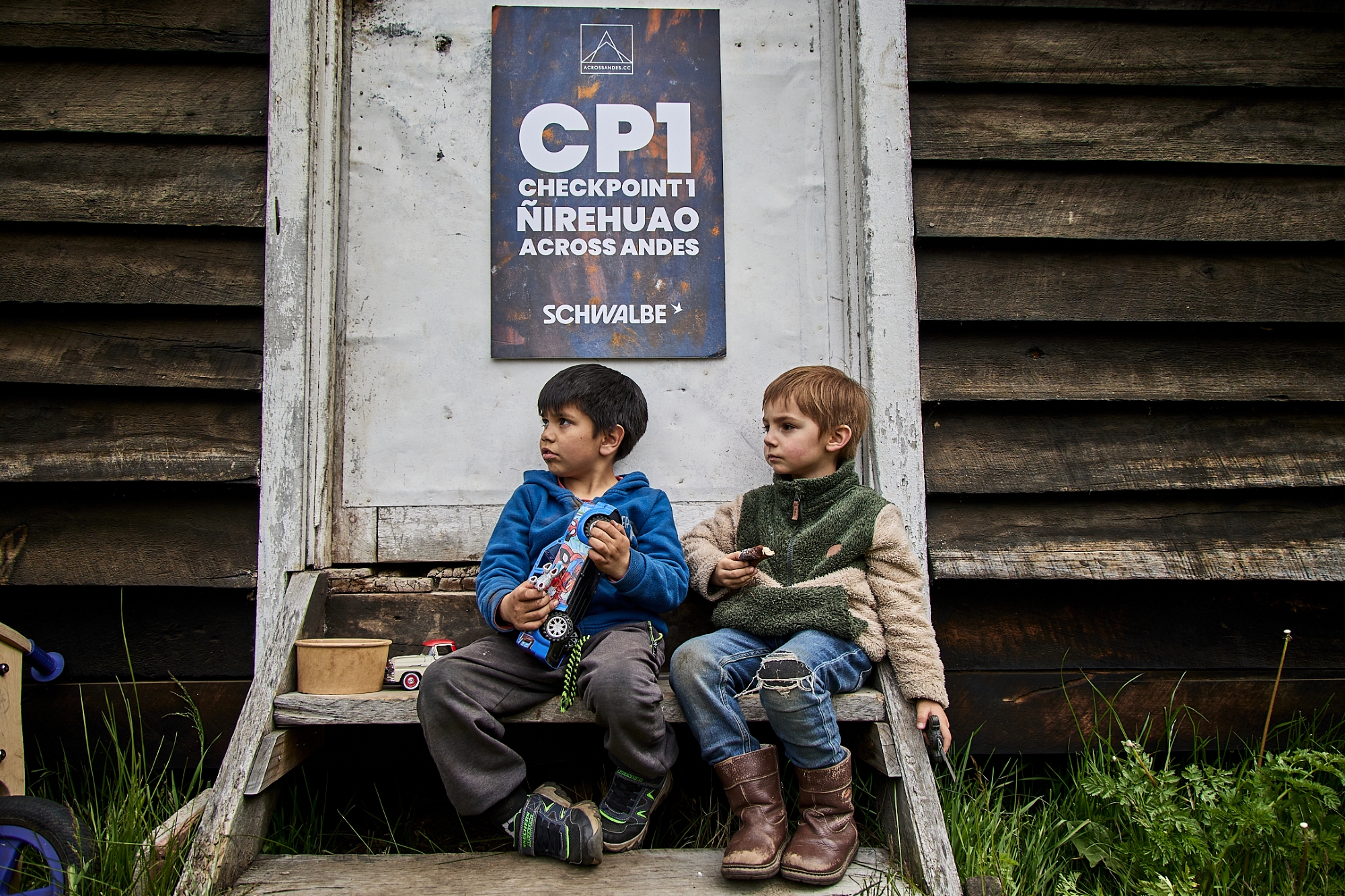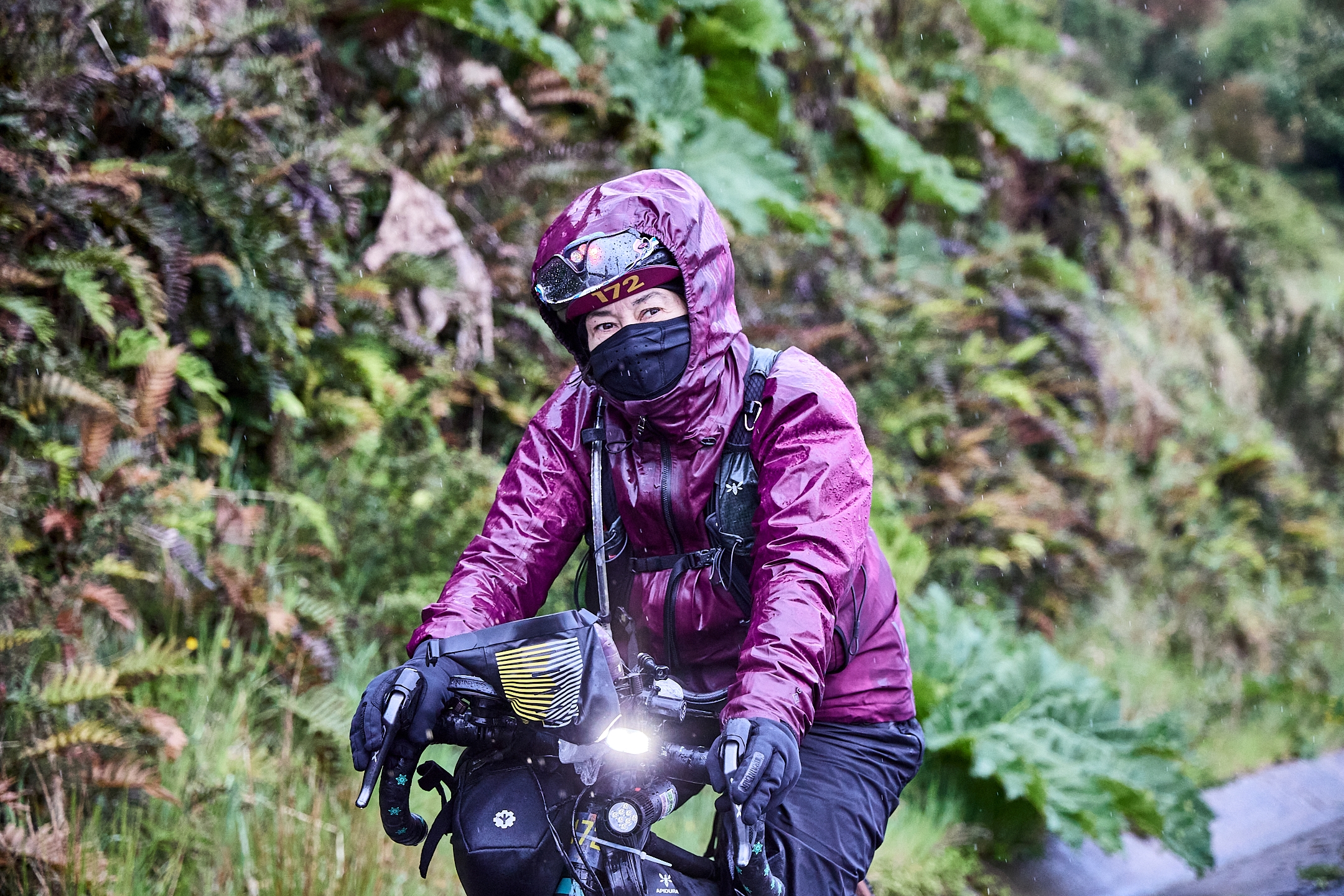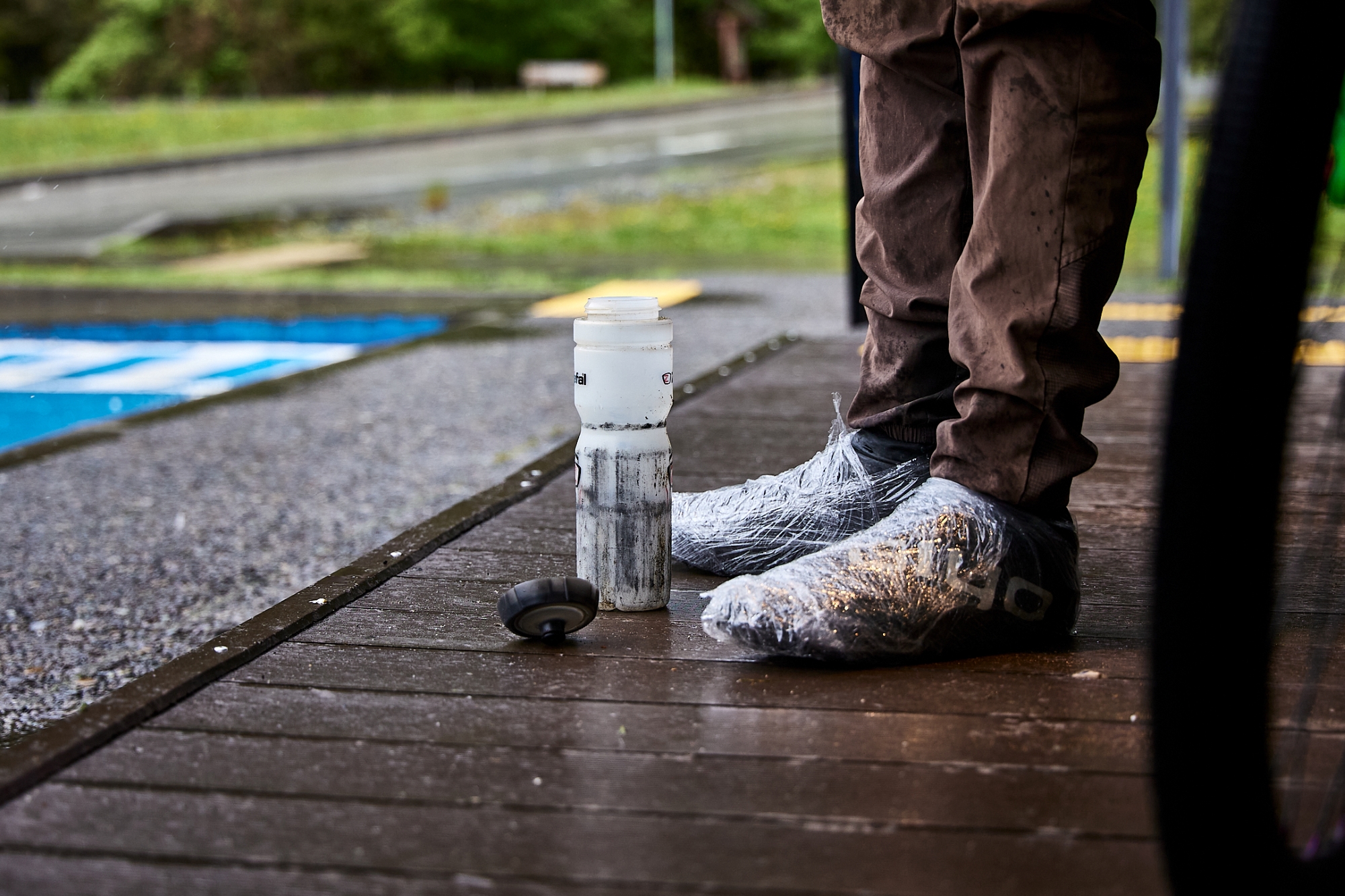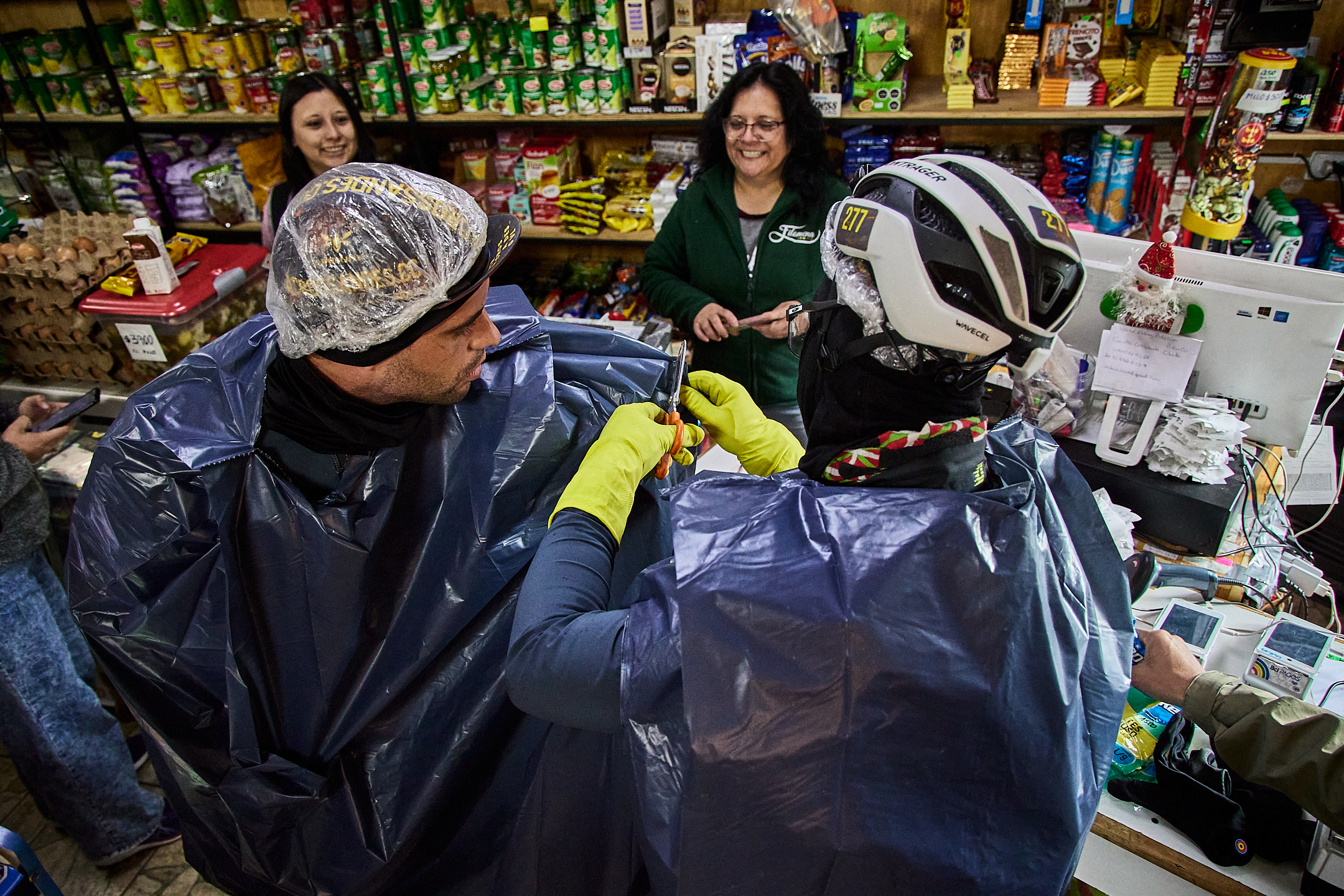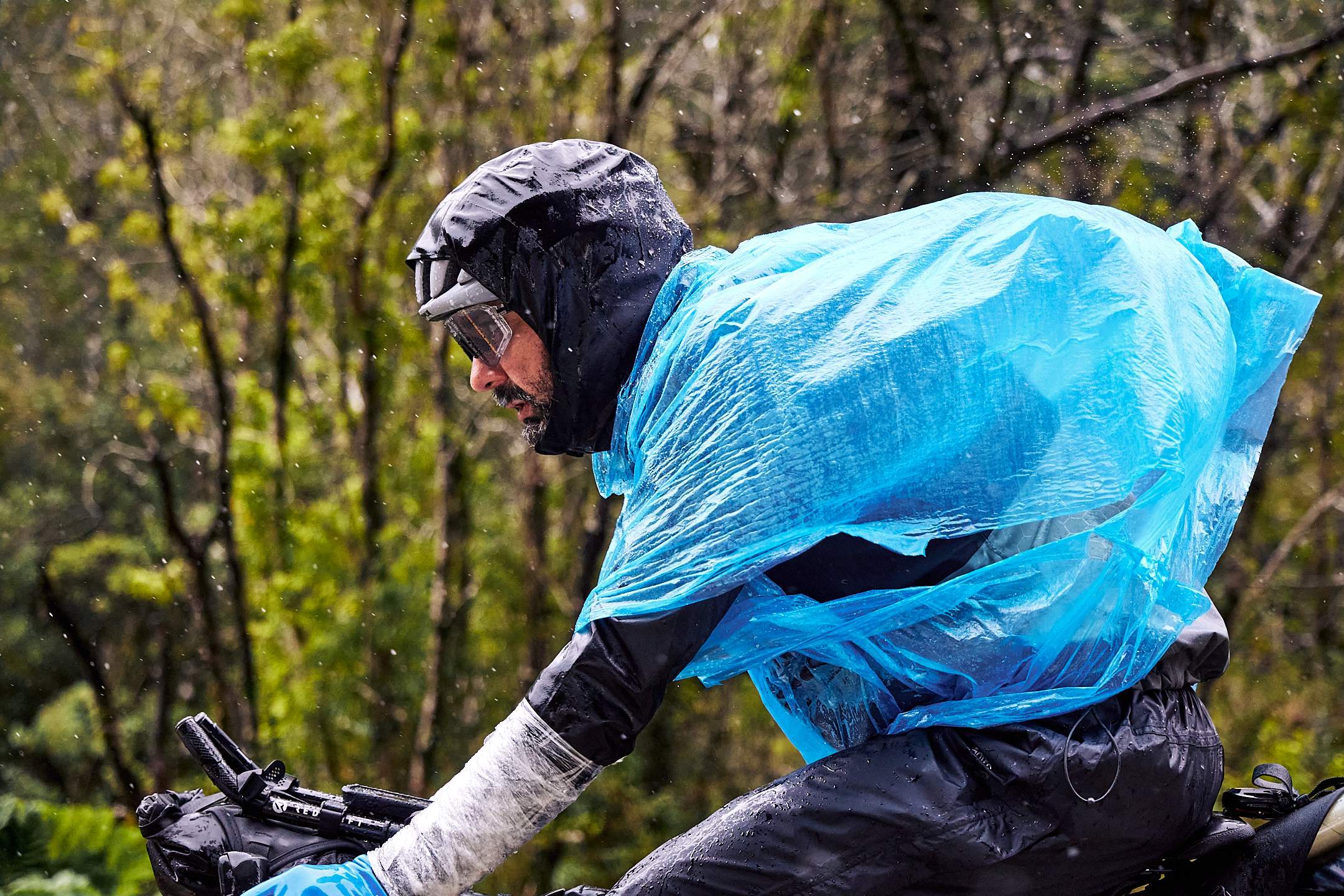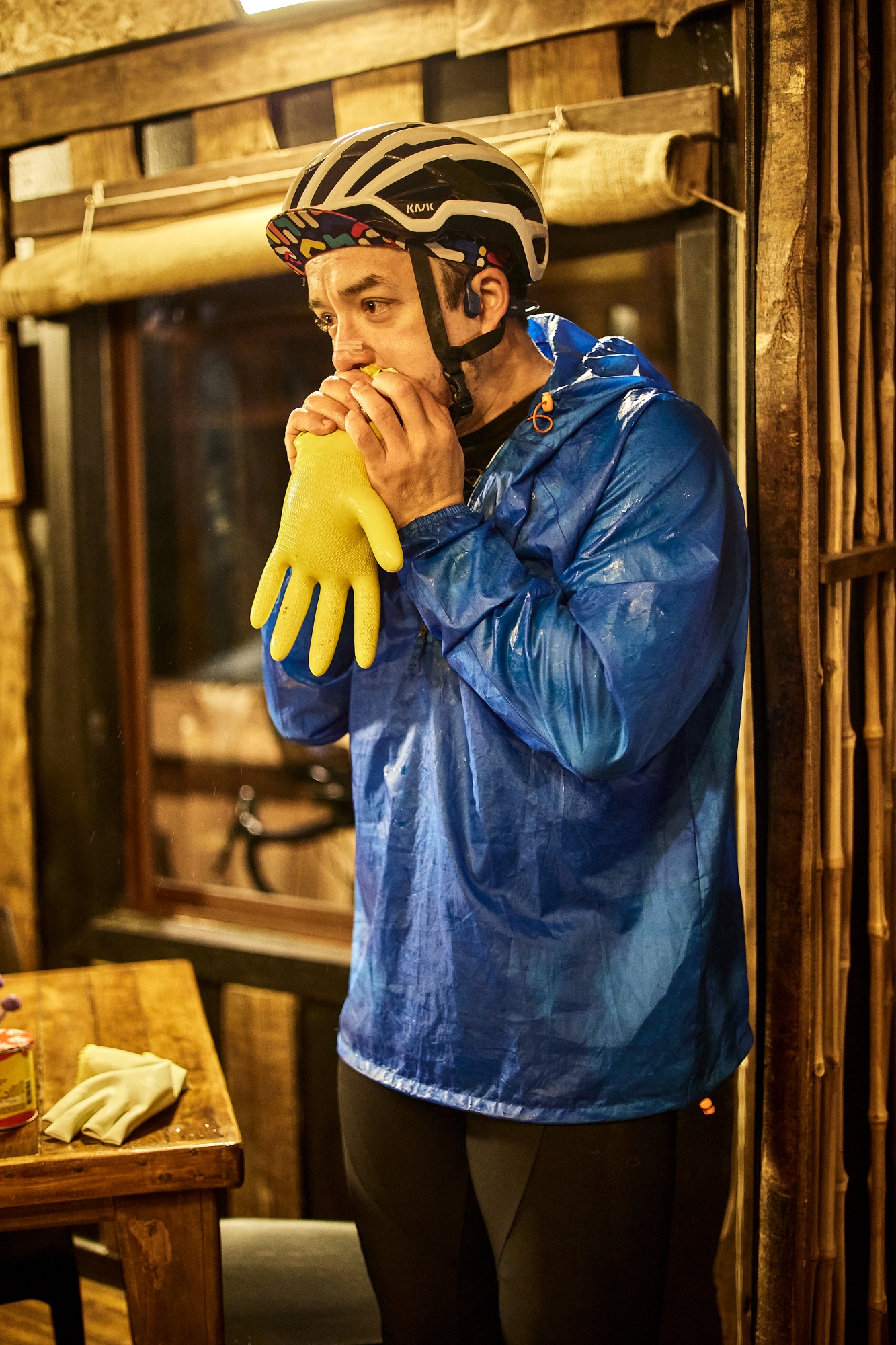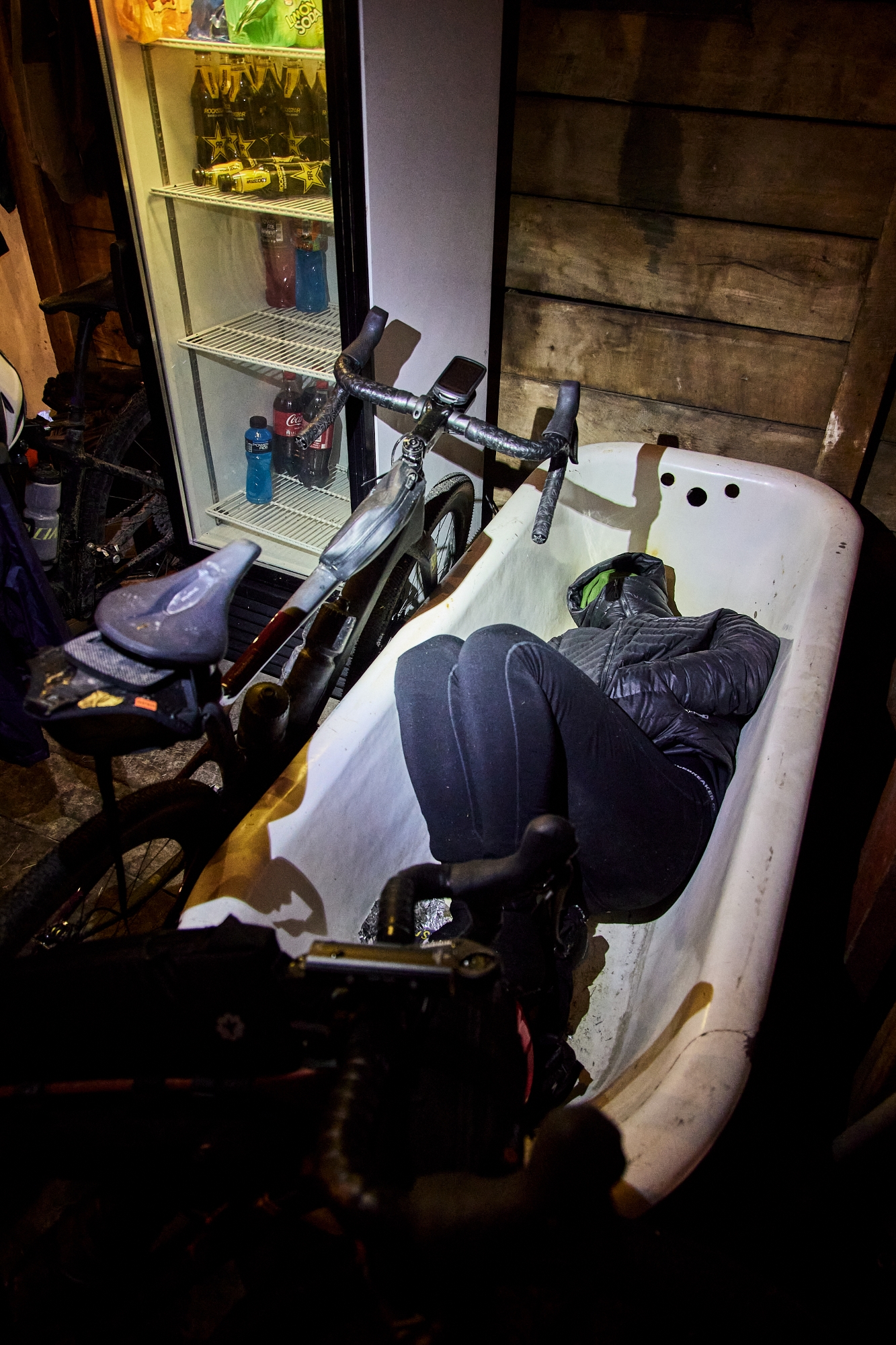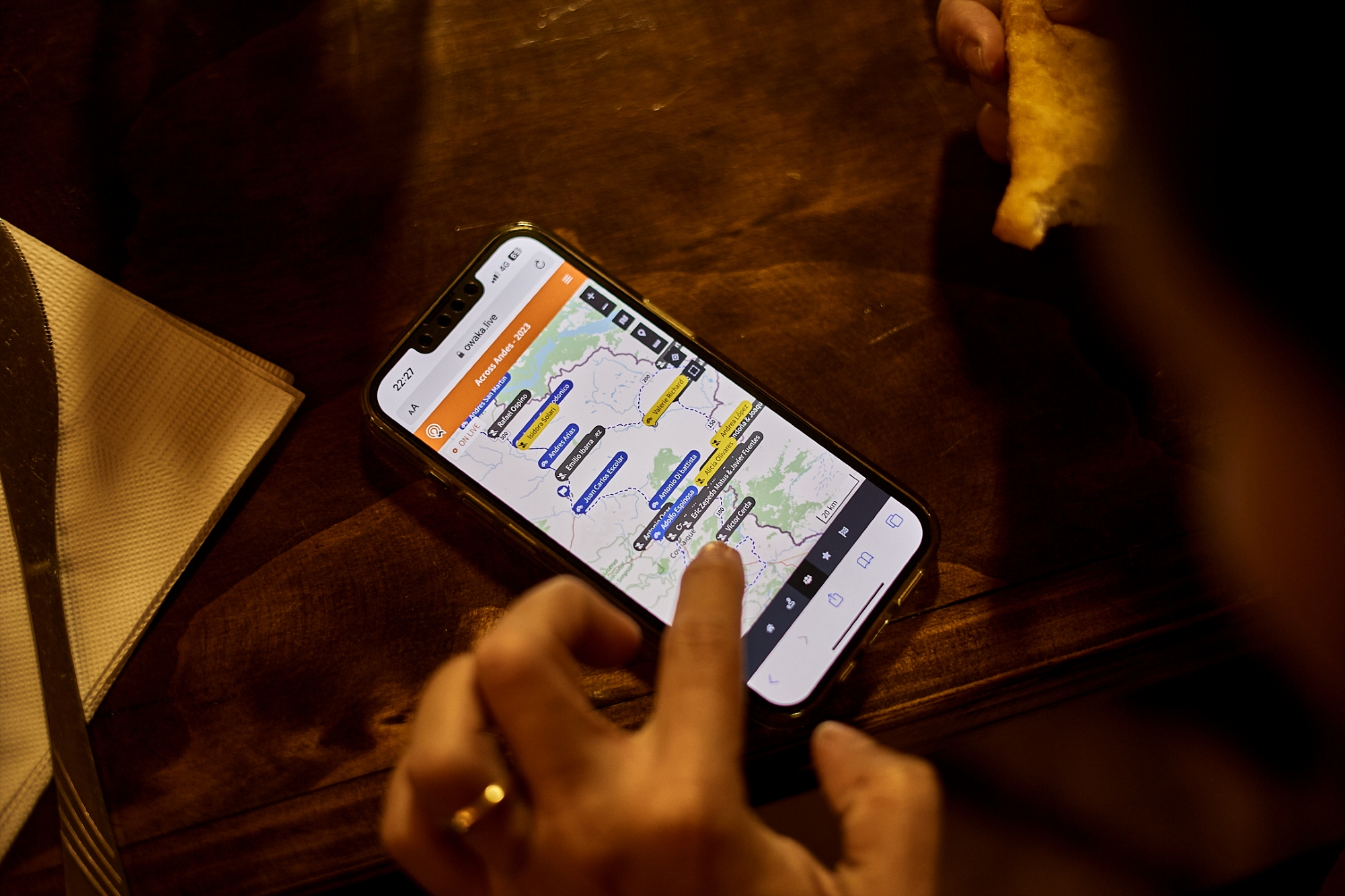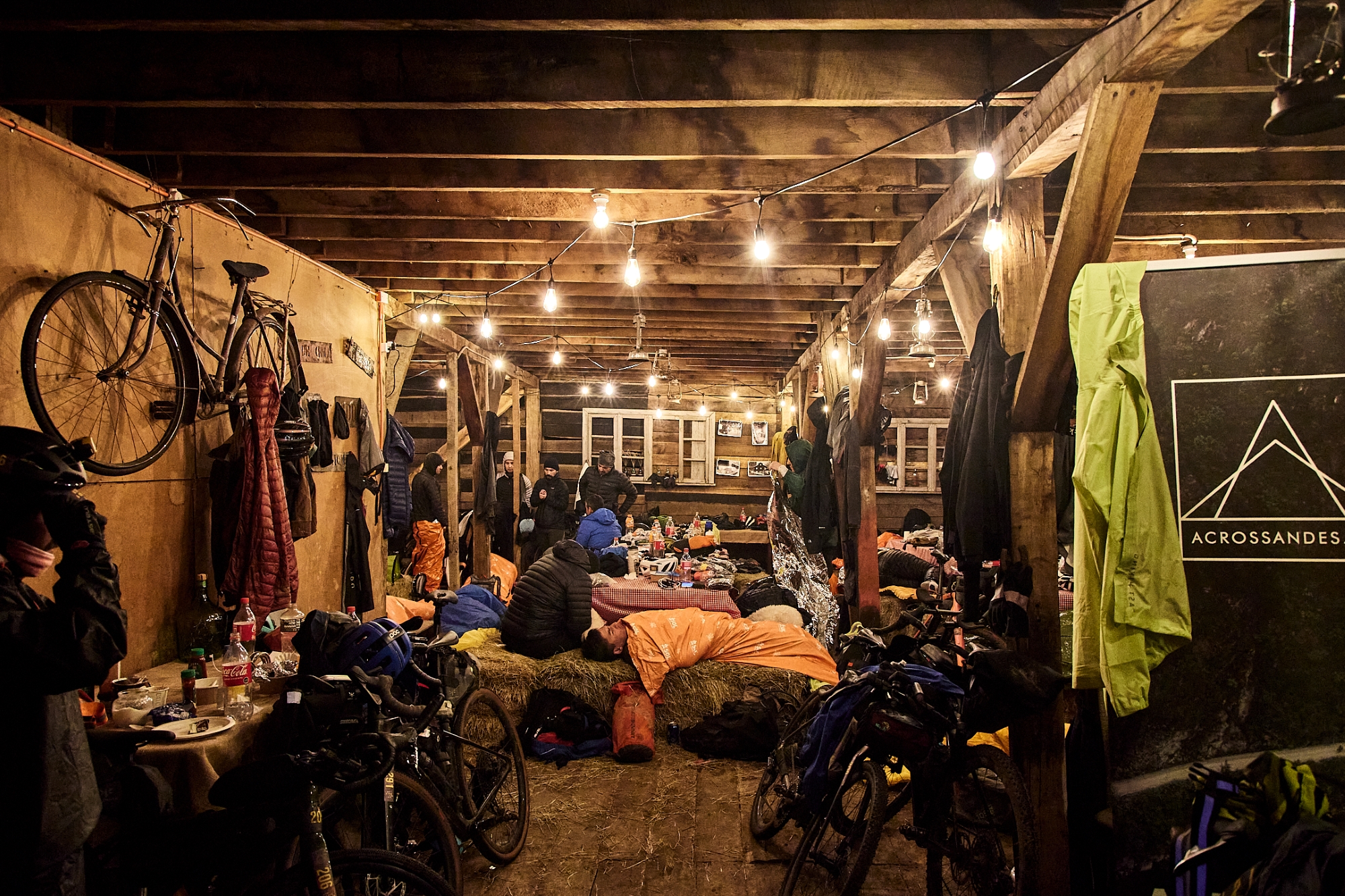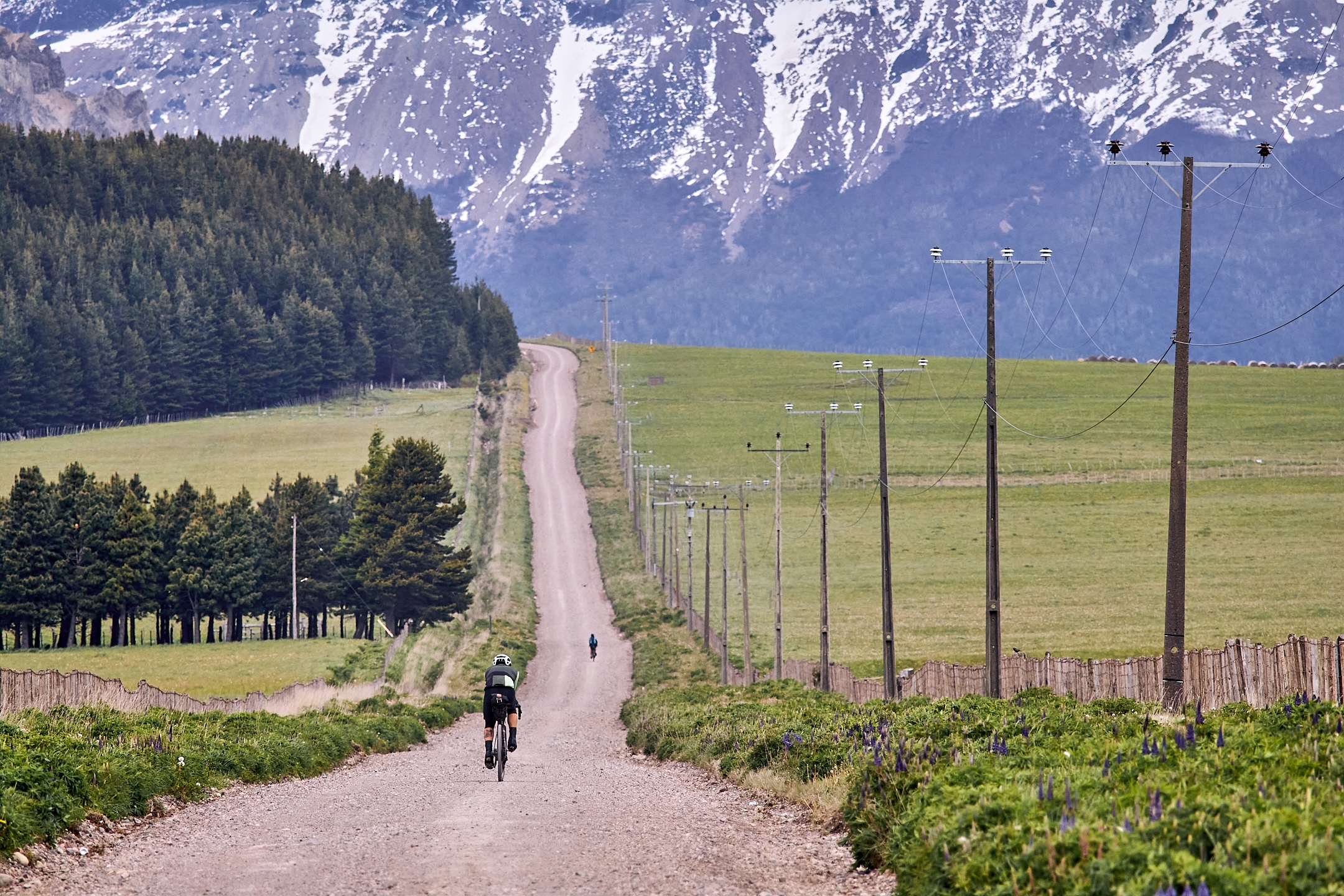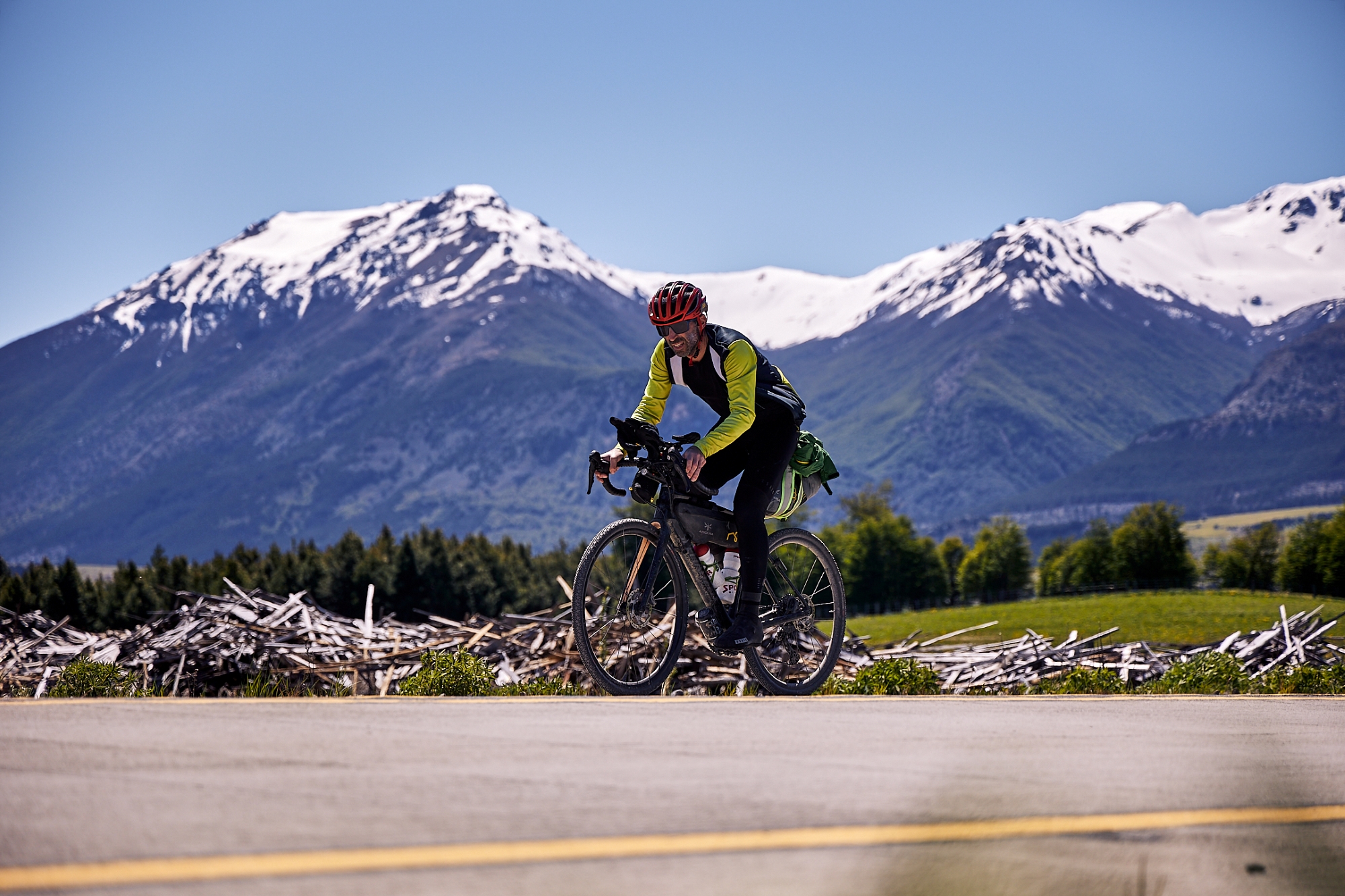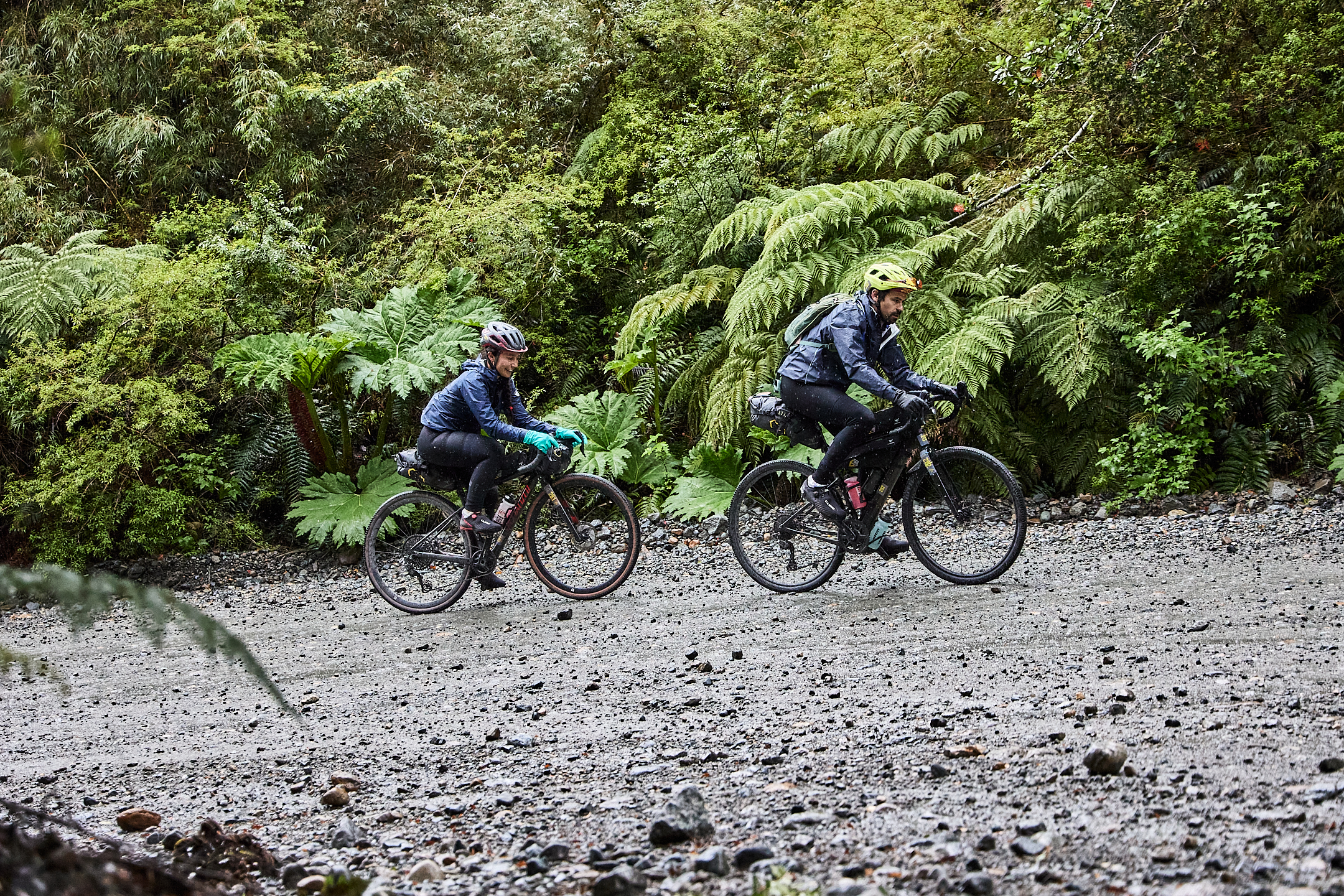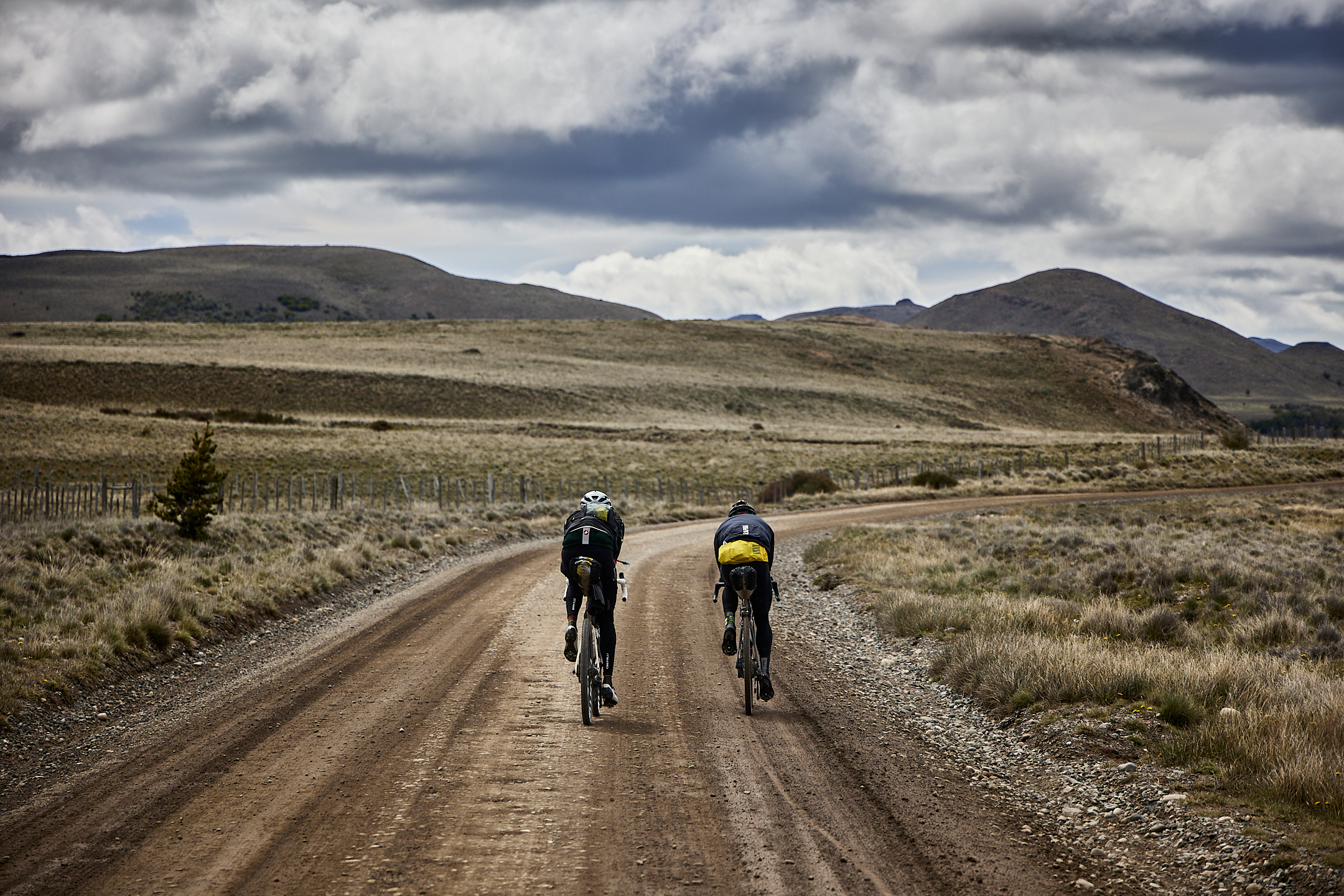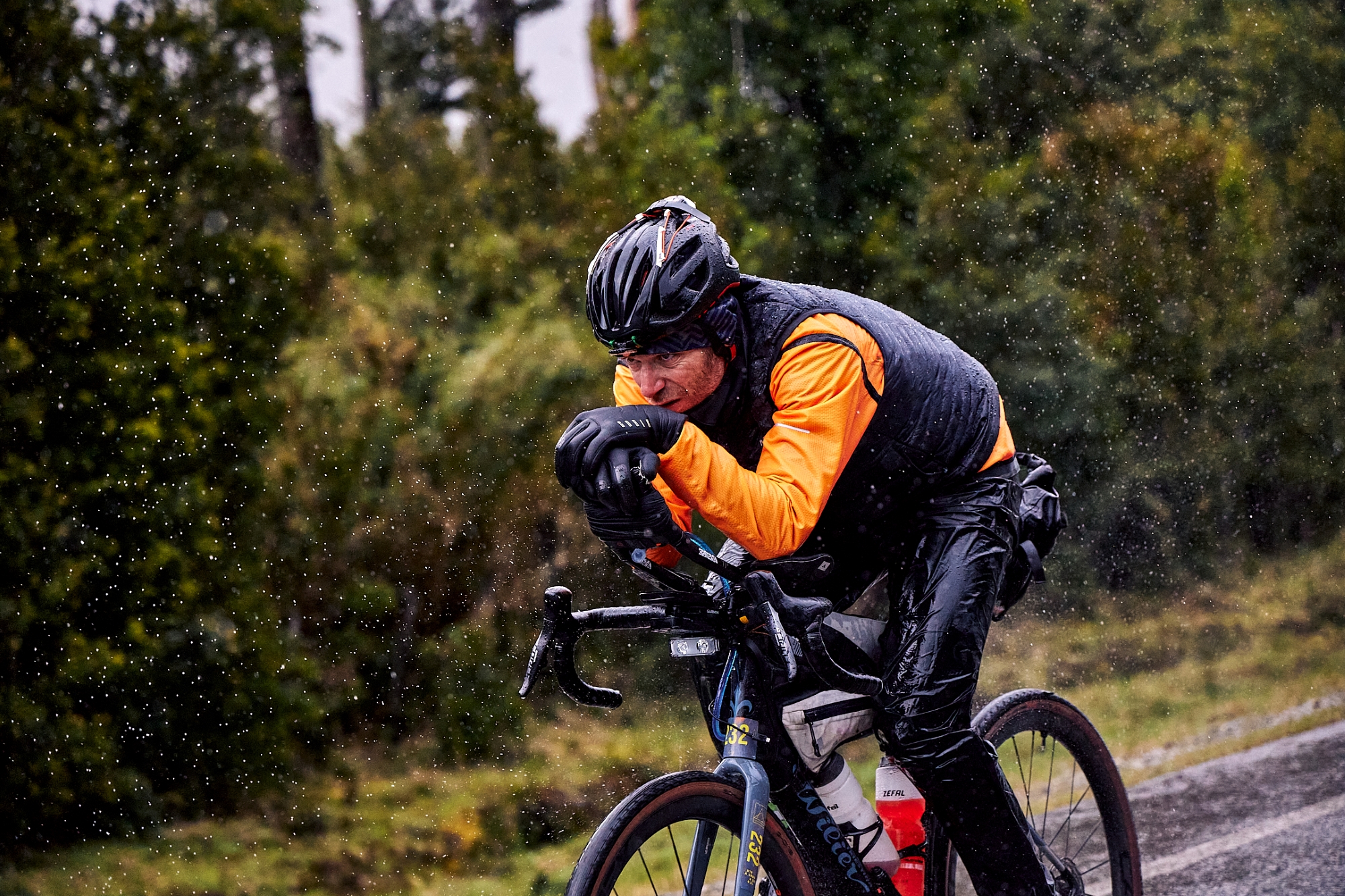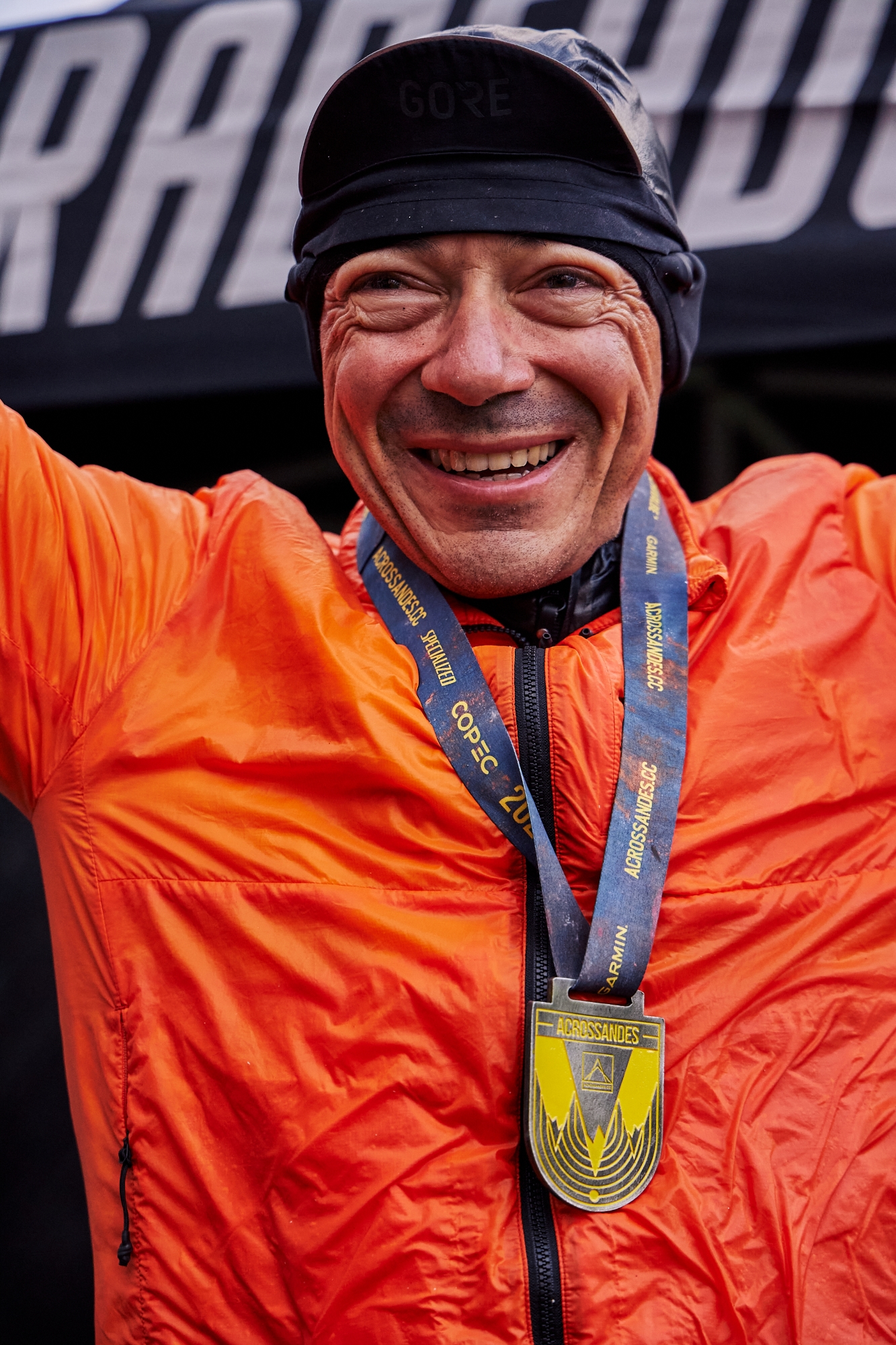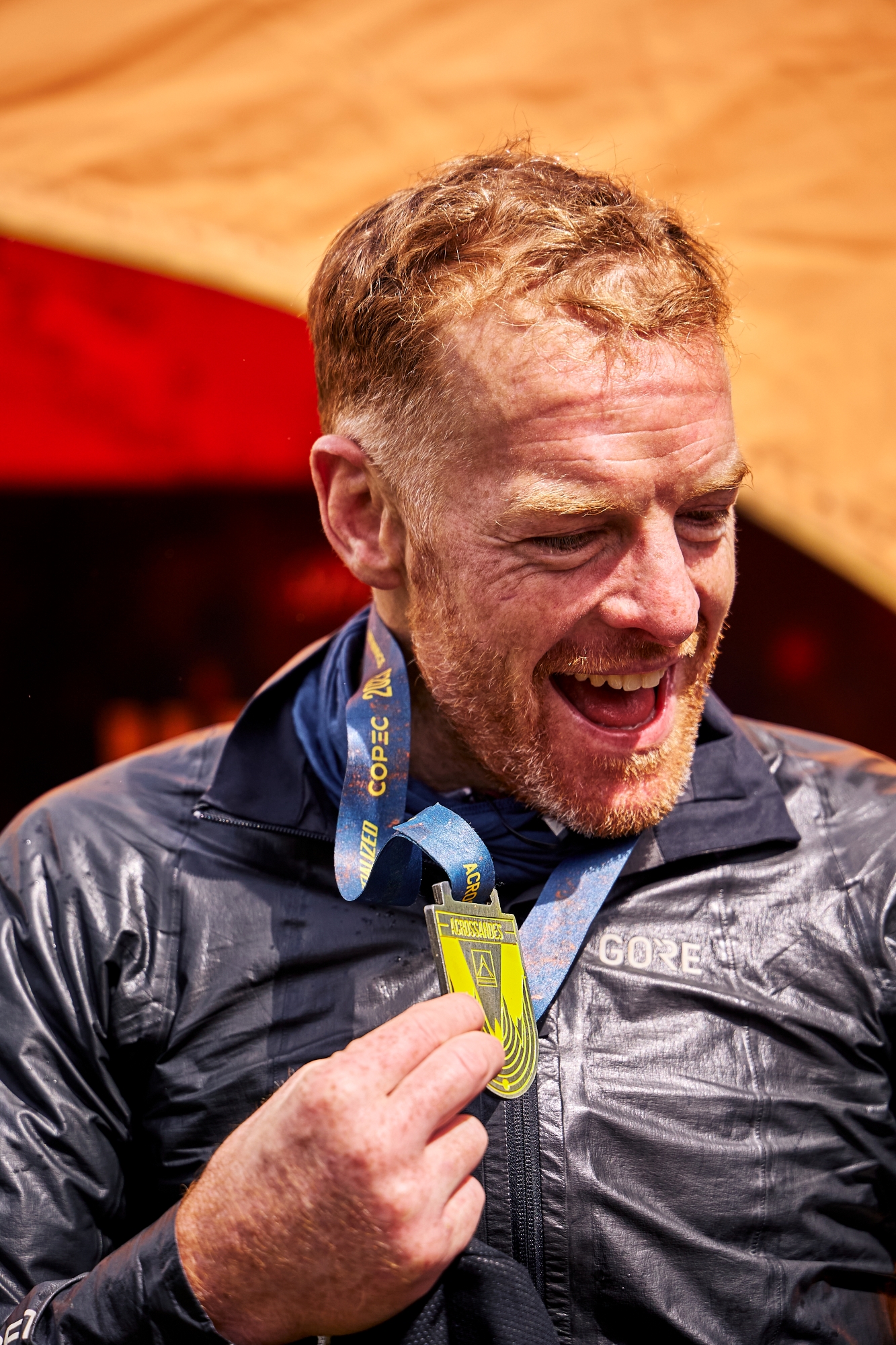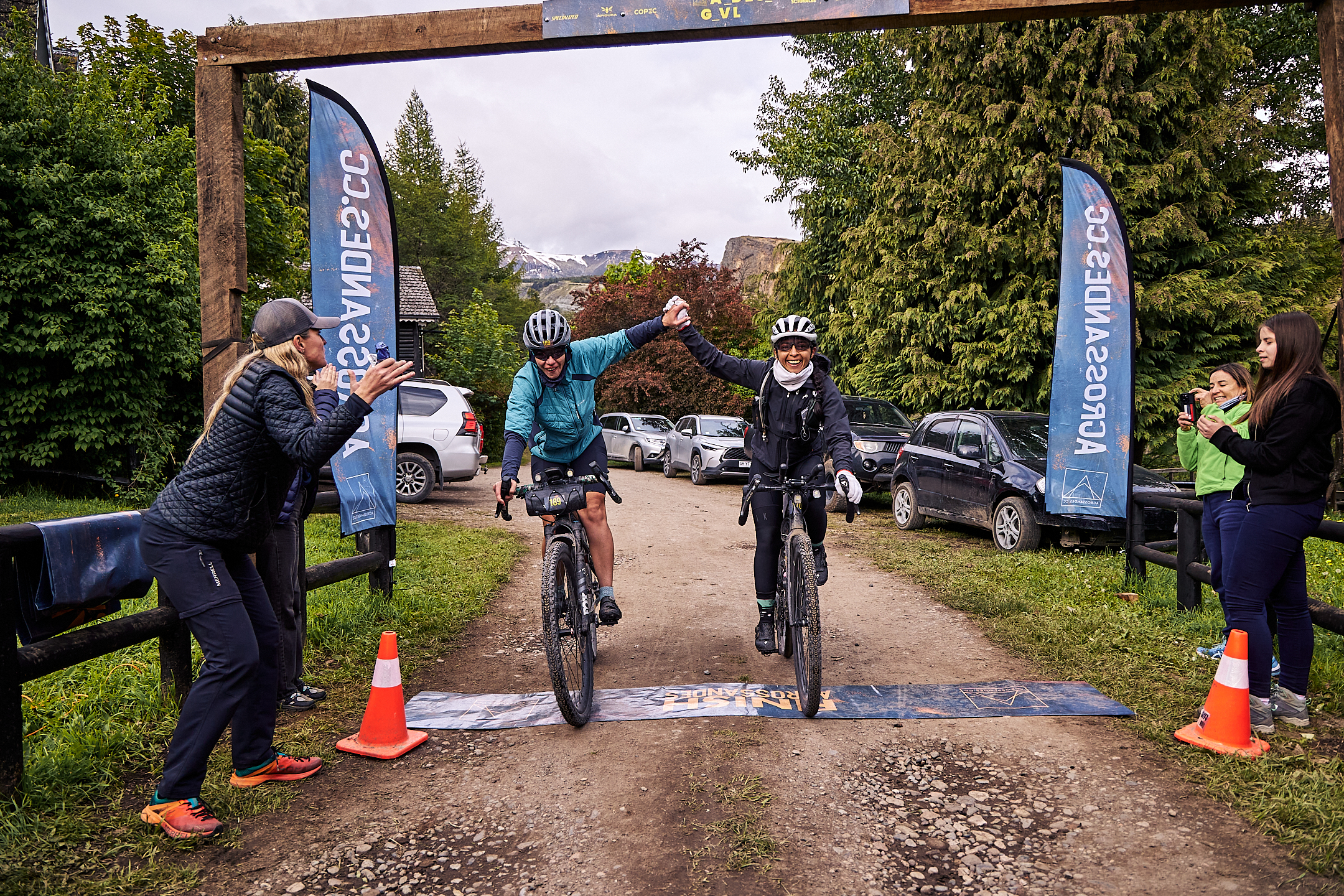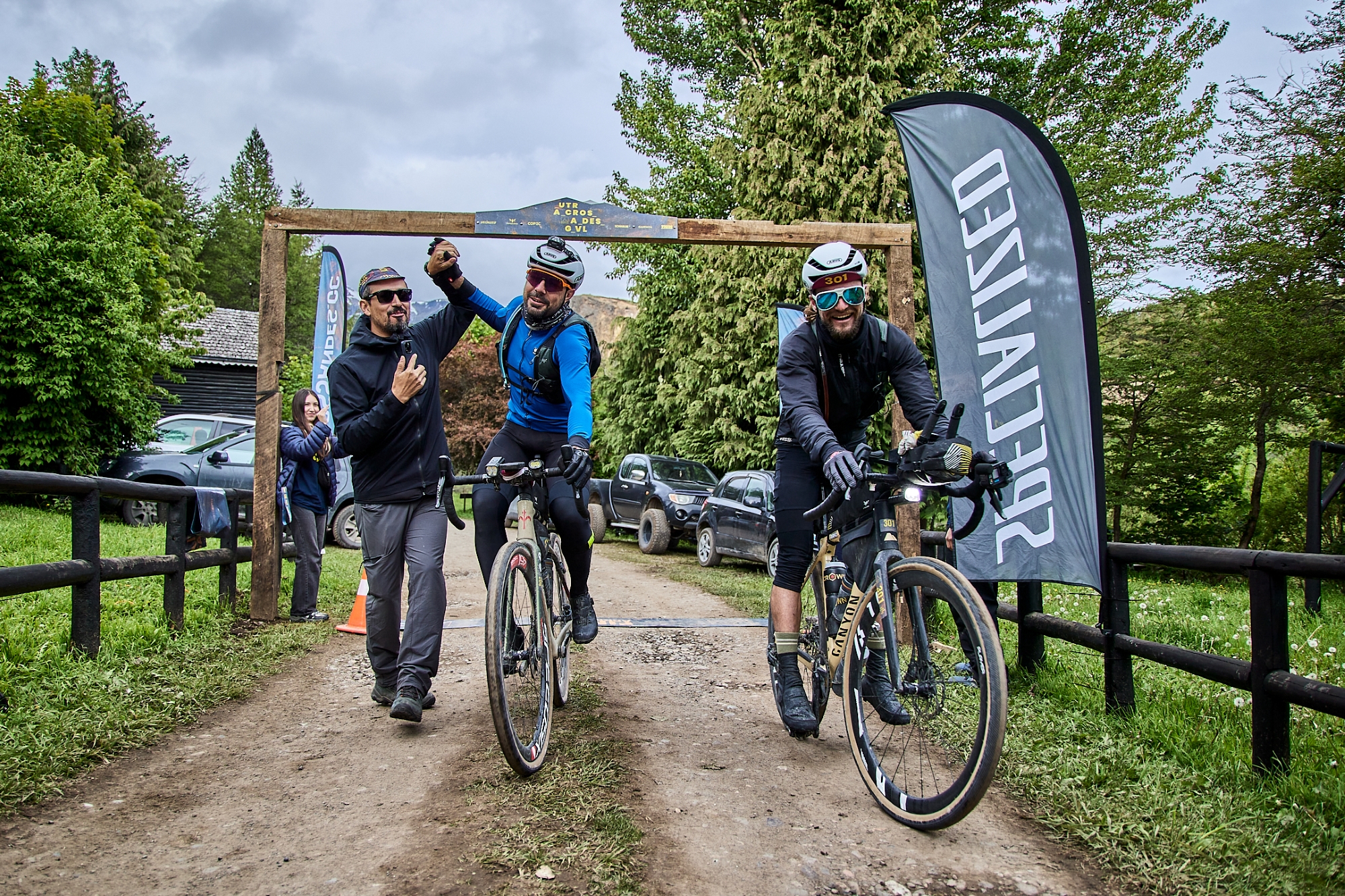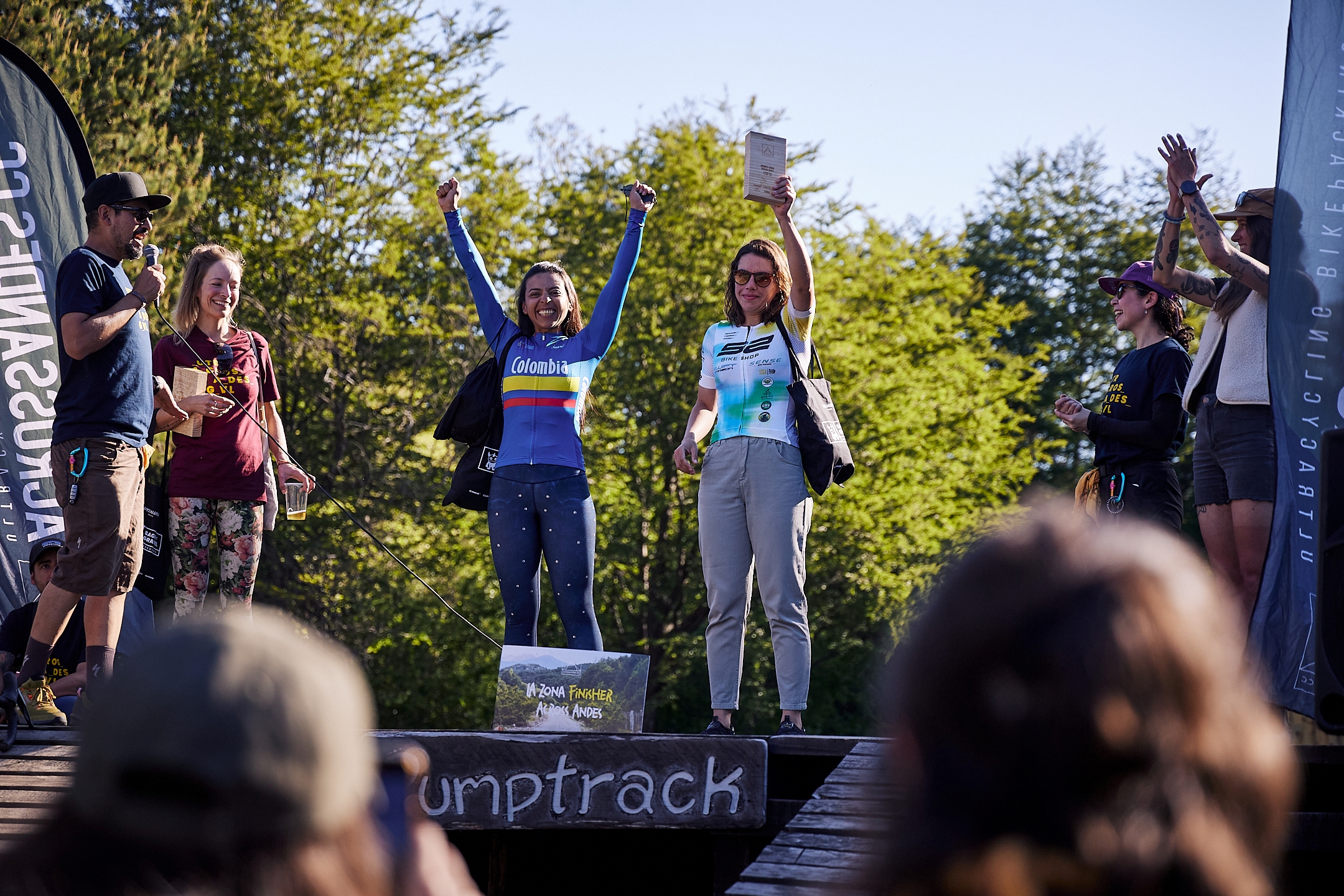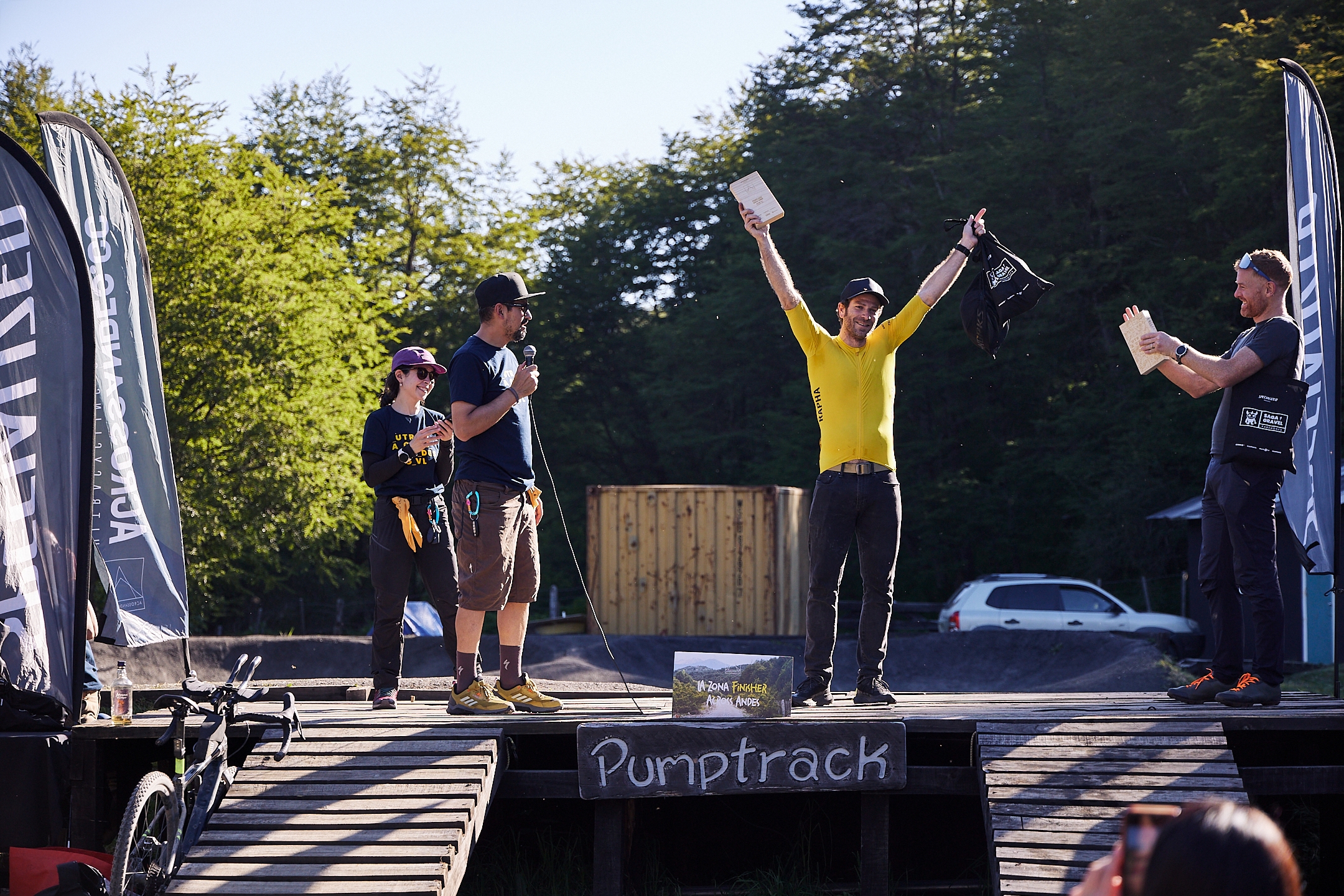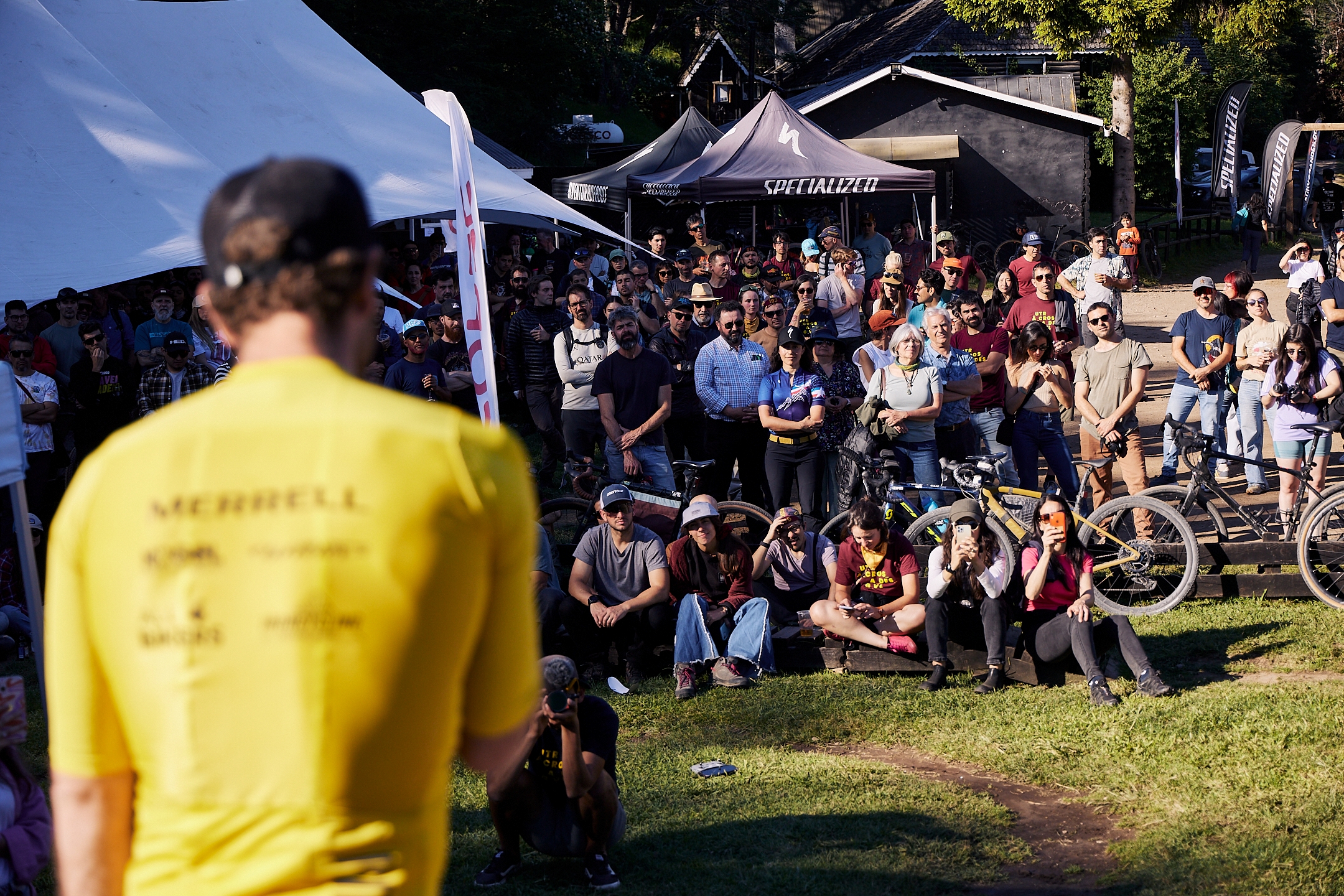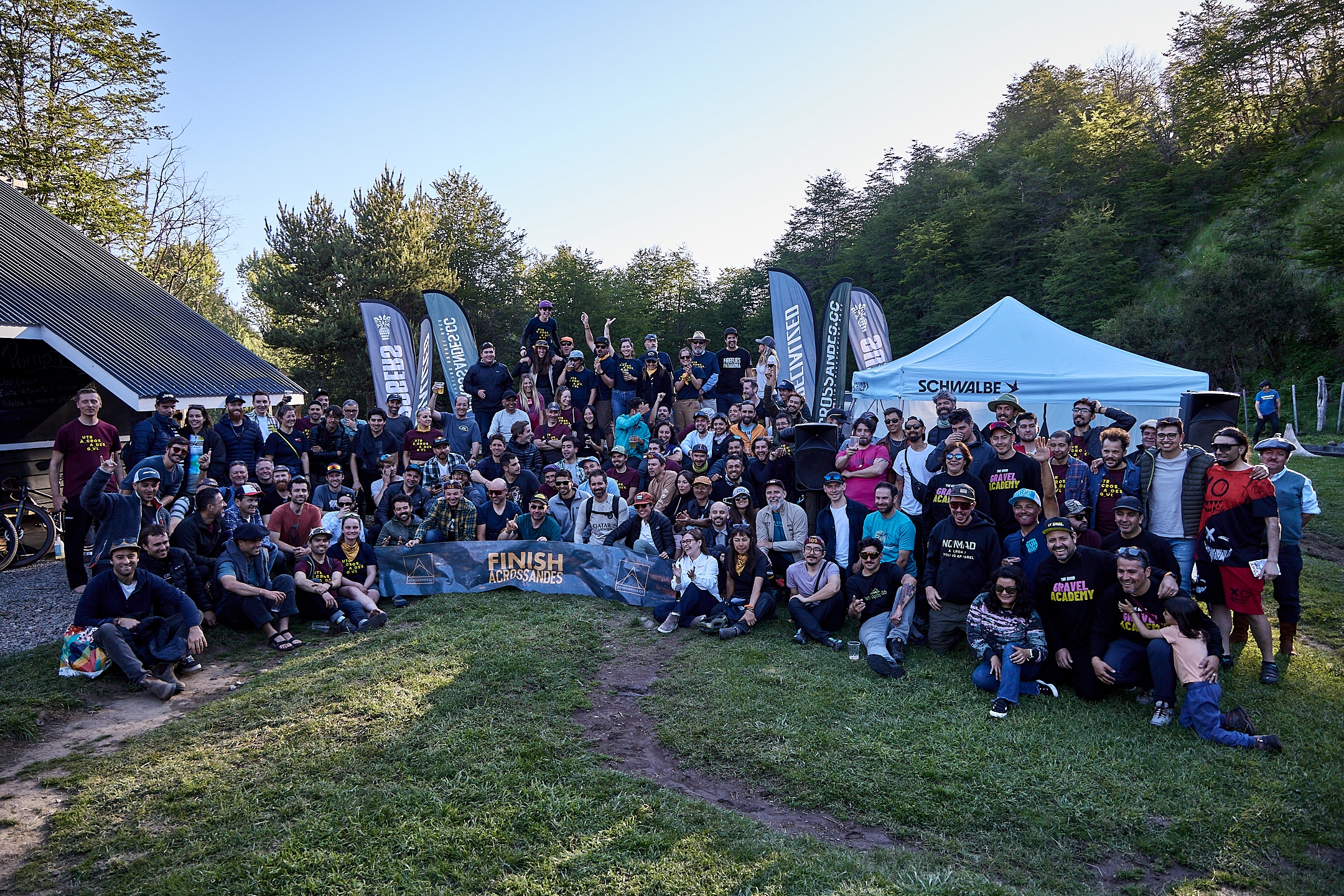“Sign up for an ultradistance event”, they said. “It is not as challenging as you may think”, no one ever said. This year’s Across Andes was one for the books due to the inclement weather and, despite the beauty and excellent organization of the event, it will surely prompt participants and dotwatchers to think twice before signing up for a similar challenge.
Fully in Patagonia
Across Andes 2023 was tagged as the “Patagonia Verde” edition and the starting point was Coyhaique, in the Aysén region of Chile. The race, which was initially 1.000 km in length with 15.000 meters of elevation gain, took place much more in the South than in previous years, which had its pros and cons. It allowed participants to immerse themselves in the varied landscapes of “the end of the world”, as this region is called, but its remoteness is directly related to unpredictable weather conditions.
On November 19th, 226 riders lined up for the start at 6 AM and they were already aware of the weather forecast, even if the conditions at that moment were very good. Over the next handful of days, they would have to tackle a combination of freezing temperatures, wind, rain and snow, which turned an already challenging route into a battle against internal and external hurdles.
The first of the three checkpoints was located at the 220 km mark. Rob Britton, the current winner of Badlands, arrived first to this estancia near Ñirehuao, and with no time to waste because Andrés Tagle was chasing behind, he stopped for barely a handful of minutes and resumed his individual time trial.
Handling the storm
At that moment, Rob was still fairly dry, but the storm started at around 4 PM and caught most riders before reaching the initial checkpoint. It would only get worse over the coming two days. Sebastian Breuer, winner of Badlands 2022, started the race at the front but a combination of illness and mechanical problems prompted him to scratch. Isi Solari was the first female to arrive at Estancia Ñirehuao, with a gap of around 40 minutes to Luci Castillejos that would come to nothing as she preferred to take a proper meal before resuming her effort under the rain.
Not long after CP1, riders covered a big stretch of the Carretera Austral, a +1.000 km long highway crossing rural Patagonia. By then, everyone was already soaked, and not even the best clothing garments would cope with the amount of rain falling from the sky. Given the conditions, and even if it may seem contradictory, most continued pushing on because there was no place to take shelter. In the end, they managed to keep the rain under control by putting on all kinds of unconventional waterproof layers.
The most relevant climb had its highest point at around the 360 km mark. They climbed it from the south side, which is paved but extremely steep, and descended to the other side through an utterly technical and rough off-road path. Rob had to tackle it during the night and, already fatigued and aware of the physical consequences of putting your body in such ultra-challenging conditions, he found his limits and scratched.
Understandably, many other riders desisted in their attempt to finish Across Andes 2023. Some did it at CP1 so a transfer could be arranged to bring them back to Coyhaique. Others gave up further in the route and were taken to a warm place safe and sound.
The population density in Patagonia region is per se one of the lowest in the continent, so taking into account that it was low-season, there were few to no places to take shelter. Sleeping outside under the storm, given the minimalistic gear riders bring to this kind of event, was not a rational option.
From CP1, Ash Wedelich started her comeback and by the time she reached the second stop to get the stamp on her card, she was already leading the female ranking and inside the top fifteen overall. Isidora Solari and Sami Sauri also put an end to their Across Andes participation with the weather being the main cause.
Participants probably didn’t pay attention, but from our comfortable position at home, we researched the different places that riders were fortunate enough to visit and ‘wow’. The paths through the Patagonian landscapes vary between wide open sections with many peaks in sight, and narrow stretches of (g)roads along the fjords at the west of the country. It is true that on this occasion riders could not appreciate the beauty of the region but it has been announced that the next edition will be almost the same route, so hopefully we will fully see what the area has to offer.
Route disruption
Given the multiple loops within the overarching loop, riders passed by La Junta several times. Firstly it was at the 450 km mark, with the second checkpoint being located 70 km ahead. Riders headed east until they almost reached the border with Argentina, and then were supposed to pass by the Patagonian village again on their way to the Pacific coast.
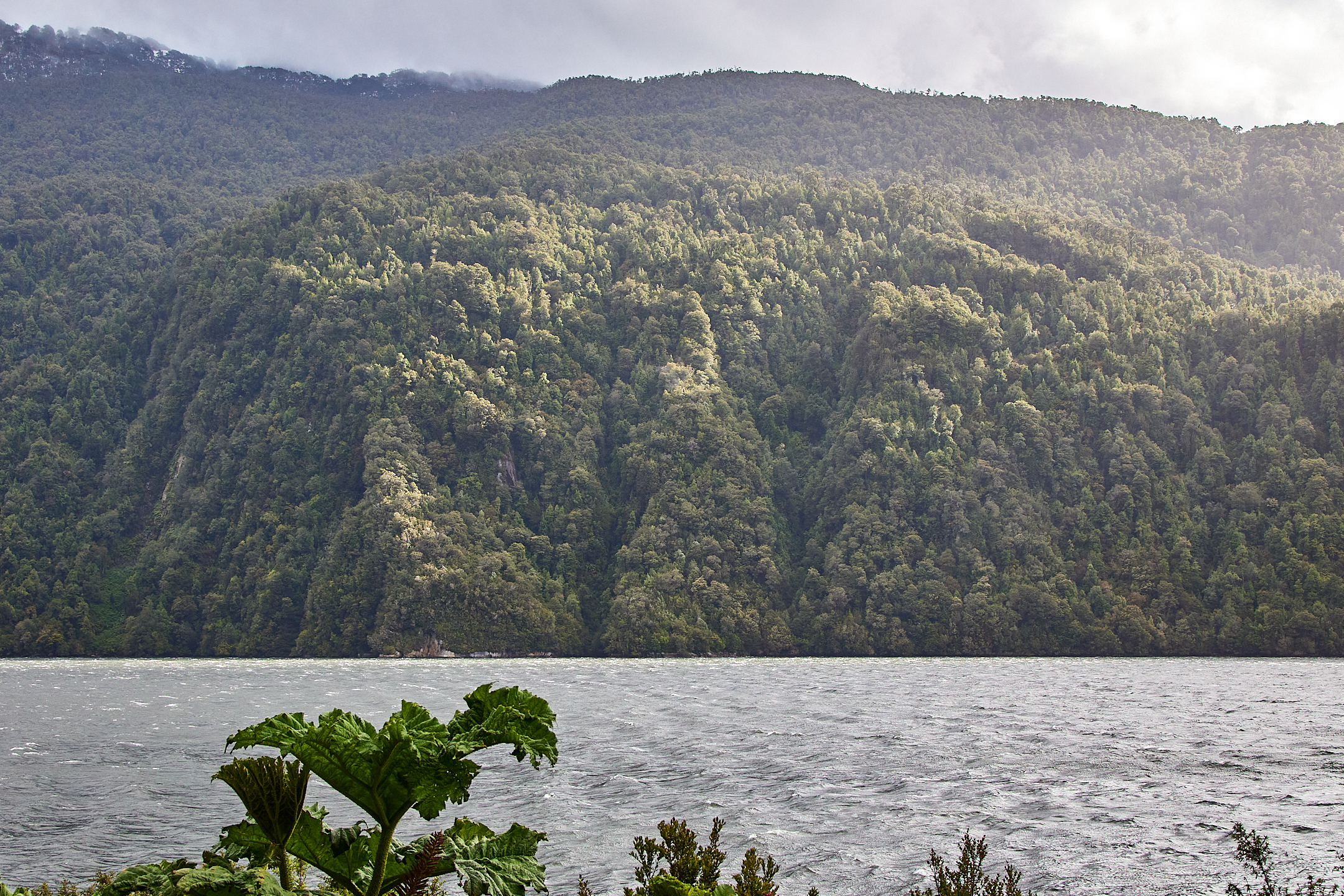
Originally, riders would take a ferry on two occasions to cross the Palena River and ride around 10 kilometers to reach the third checkpoint CP3. They would then head back inland following the same paths in the other direction. However, the organizers, thinking that the local authorities would cancel the ferry service due to the relentless storm, acted proactively and cut the route short. Checkpoint three would be a virtual checkpoint instead of a physical one, without having to stop anywhere to get the stamp. This meant that the final route was around 850 km in length instead of 1.000 km. The cutoff time remained unchanged so everyone still on route could be confident to make it to the finish line on time.
The riders were notified about it, and it was received with mixed feelings. Those who were pushing to reach the desired ferry crossing, taking into account that there are 13 hours between the first and second service of the day, felt that they had lost some precious bullets. It reminded us of the logistic strategies of the different Gran Guanche events.
Many superheroes and some winners
Andrés Tagle won with a time of 47 hours and 11 minutes. He showed his relentless mindset from the moment at around kilometer 150 when he slashed his tire and had to chase Rob Britton. Once the Canadian scratched, he took the lead without knowing it and never looked back. He didn’t sleep at all!
As Andrés said during the recording of the Noise by Across Andes podcast episode, he didn’t look at the dot tracker at all during the race, and it was the local gendarmerie who told him that he was the first one to pass by. Another interesting takeaway is his nutrition during his effort: 76 gels, 35 bars and 80 frugelés, a typical candy from Chile.
The common conclusion is that the terrain was less technical and hilly than in previous editions, but the conditions made it super hard. Andrés’ opinion is a valid one as he already won the inaugural edition in 2019. He did so while riding in pairs with Rodrigo Canuto, who was also part of this year’s edition and finished fourth. On this occasion, it was the Italian Cristian Auriemma, aged 49, who finished second, two hours behind Andrés. Matt Brokenshire can say he had a successful first-ever ultradistance experience as he finished third.

We talked before about Ash’s comeback and the pain she was starting to feel in her knee. That, in combination with hypothermia after so many hours under the cold rain and snow, meant that she would not be able to make it to the finish line, even if she was “just” 160 km away. In the end, the winners were Maria Paola Bulla and Raquel Parizi. Yes, winners in plural because they crossed the line hand in hand.
Regarding the pairs, it was César Mato and Óscar Pujol who claimed the win. Although they arrived many hours after the overall winner, they had the legs to be at the front, but the pair went for a relaxed approach and preferred to have a proper rest each night.
The sun always shines after the storm
On Thursday the rain would finally stop for good, and the mid-packers could enjoy the landscapes on their way to the finish line, even allowing themselves to have a proper night of sleep to have enough energy on their arrival and celebrate with the rest. 66 individual participants and 9 pairs can say they finished Across Andes before the cutoff time, but every single person who started the race five days before can be proud of their achievement.
Today, December 1st, the applications for Across Andes 2024 have been opened. Due to the big number of interested people, and in line with the most relevant ultradistance events, entries will be granted based on a lottery system, so apply now if you want to ride along the Carretera Austral and much, much more.



